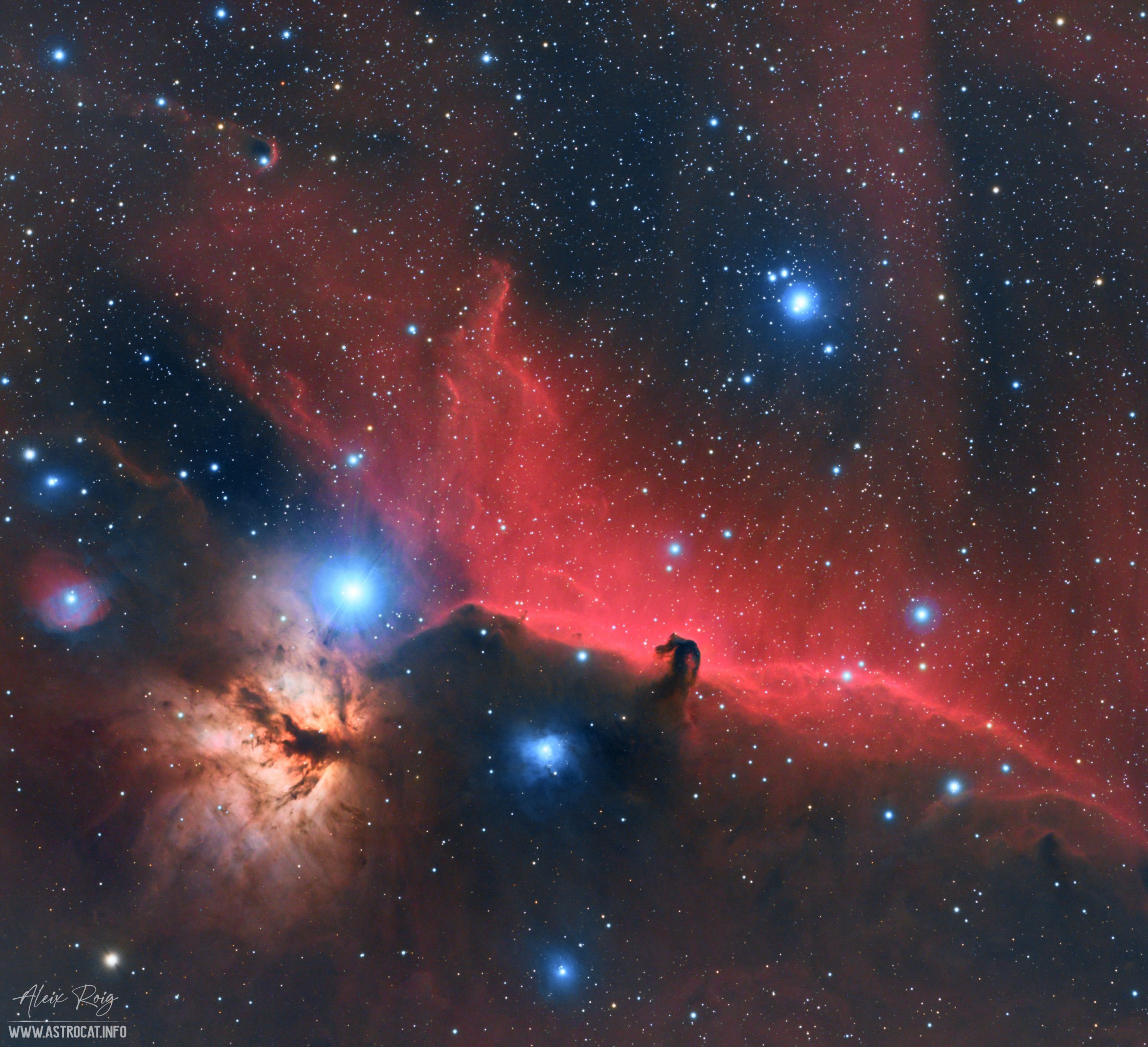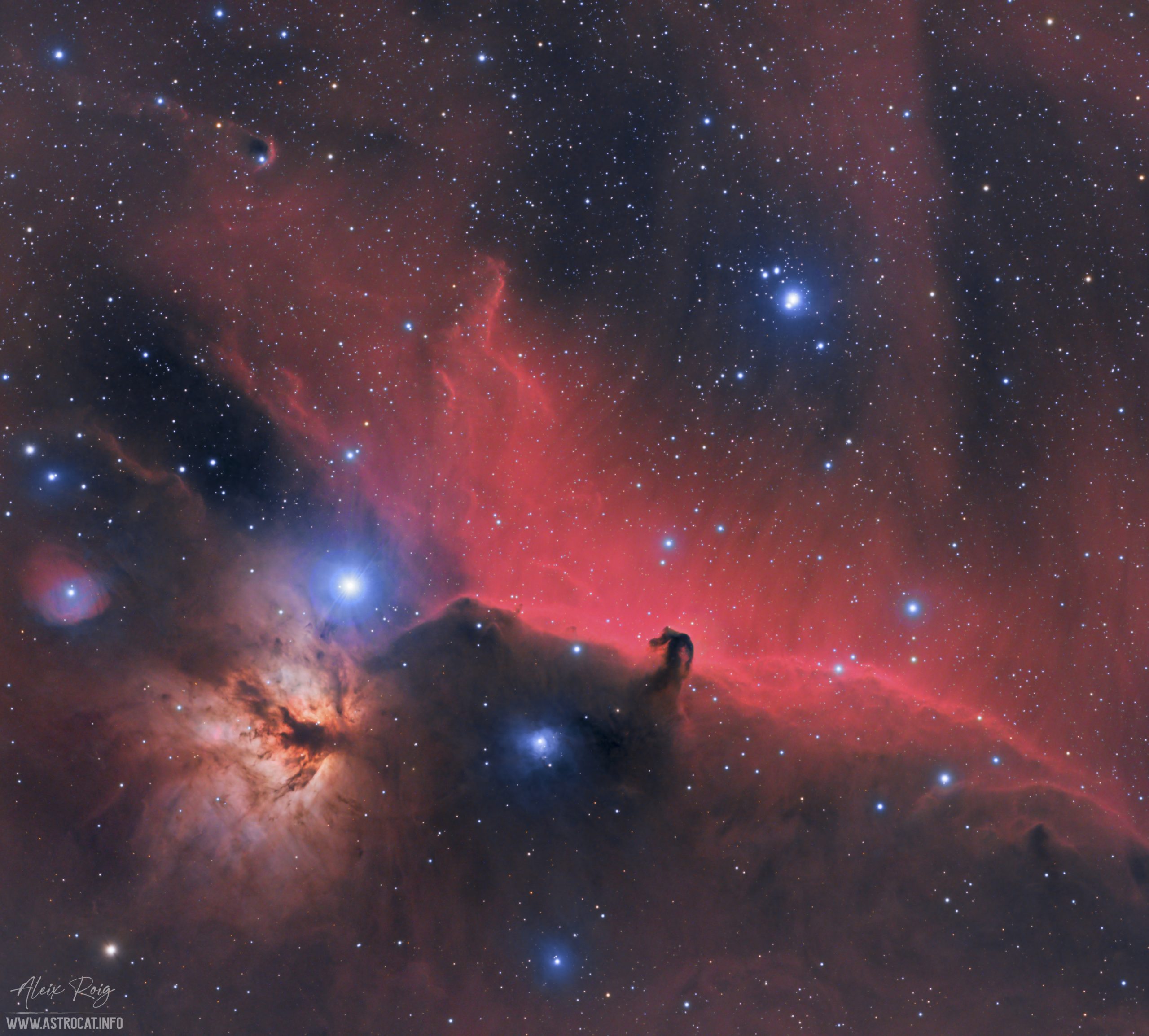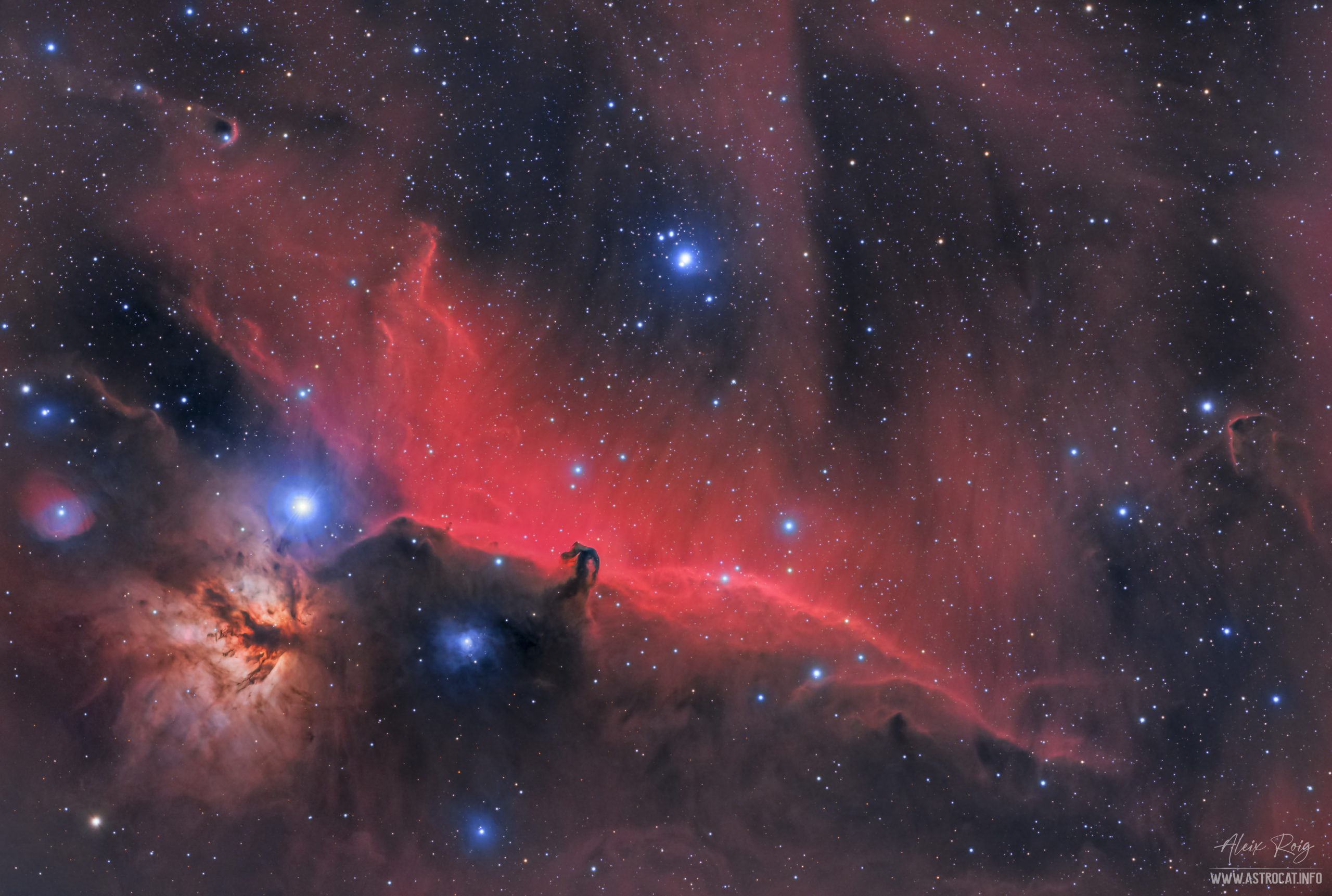The Horsehead Nebula, IC434, and the Flame Nebula NGC2024, are two amazing targets of the winter sky (northern hemisphere). Due to the high brightness of Alnitak it’s quite difficult to get some decent results in this field. This was one of the reasons that made me escape from that bright star in my past pictures of this region.
The Orion constellation is full of amazing nebulae. Most of them are part of the same dusty cloud, mainly composed of ionized hydrogen that emits really strong in the H alpha spectral line. The use of narrow band filters allows us to detect all these emissions. This image shows the area that surrounds the Horsehead Nebula full of molecular clouds from the Orion Molecular Cloud Complex.
This image is the “second light” of my new ASI294MM-Pro. I have chosen this target, including Alnitak star, due to the difficulty of capturing this bright star in terms of reflections and microlensing effects.
Two final images are shown, the first one containing L and Hα data for the luminance, and the second one with Hα as Luminance.
Image Details
Luminance: 37×120″
RGB: (R: 14, G:31, B:30) x120″
Hα: 74×300″
All images at 120 Gain -15ºC bin2
Calibrated with 50 flats, 50 darks and 50 bias
Total exposure: 9h26′
Image resolution: 2.12″/pixel
Average darkness: 20,8mag/arcesc2
Equipment
FSQ85ED telescope
Mesu200 mount
ASI294MM Pro camera with ZWO EFW 8 pos
Guiding with ASI174MC and ZWO OAG
Baader filters
Software
SGP, PHD2, APP, PIX.
Aleix Roig – Prades, Tarragona (Catalonia, Spain), March 2021.



